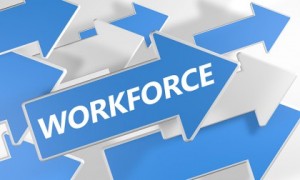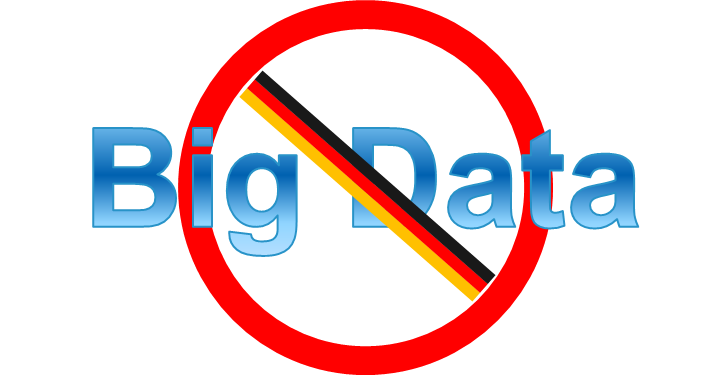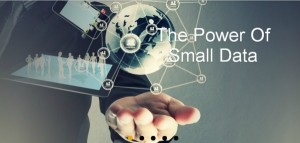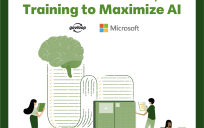In the world of human capital management and HR, forget big data.
Well, forget it a lot of the time.
In today’s fast-changing world, people and organizations tend to quickly latch on to the concept of new technologies and the latest trends. But we often discard them quickly too, while failing to take a deep dive and failing to gain a true understanding. This is true in the federal space as well.
In the world of federal HR, big data and some form of analytics (either people analytics or talent analytics or HR analytics) are often used interchangeably – or without much thought. Throw business intelligence into the mix and the whole area of data and analytics can become quite complicated.
But whatever terminology you might use or be presented with, it’s important to keep in mind what’s important to your agency, such as better decision making, improved workflow and improved processes for your agency’s people. What you’re ultimately looking for is a better-performing workforce. This improved workforce can be achieved through various means, including:
- better talent
- reduced hiring times
- reduced costs
- improved retention rates
- enhanced agency efficiency
- increased revenue
- improved onboarding
- improved employee engagement
- better-performing employees, teams and agency
- understanding and predicting skill gaps
- better leadership development
- projecting workforce needs
- identifying best locations for recruiting efforts.
Beyond the Buzz
In an increasingly complex environment where confusion may reign, it can be useful to simplify concepts – and buzz words – as much as possible. Whether your choice is Wikipedia, Tech Target or any other of the voluminous online encyclopedias and online resources, the most basic definitions come down to something like this:
- Big Data: capturing and storing the ongoing creation and flow of enormous amounts data
- Business Intelligence: software that generates useful displays of data (big or small) to assist decision making
- People Analytics: the application of business intelligence and sophisticated data mining to help decision making and help recognize previously unrecognized patterns.
While there may be instances where some or all of the above terms can be used interchangeably, that is often not the case, despite how frequently that occurs. Federal agencies can apply business intelligence or people analytics to big data – or not-so-big data. Furthermore, it is often the case that significant insight and improvements to workforce performance can be gleaned from just a small amount of data, or data associated with just one workforce category, team or even individual.
Optimizing the Workforce
In the end, what agencies should be focusing on is optimizing their work forces. In particular situations, arguments can be made for using the technology associated with the terms above or even other terms. In the case of federal HR, the data of interest is people-related data that exists within an agency and the desired results are to optimize business outcomes, solve agency problems and help the agency achieve its mission. If data can help achieve that – in some manner – then what it’s called is far less important.
 The challenge of utilizing data to achieve HR’s goals is often complicated by the fact that HR historically and typically does not have a lot of technical expertise. To non-technical types, the mere thought of utilizing data and analytics can be intimidating – throw “big data” into the mix and it’s even more so. The challenge for providers of tools is to remove that intimidation – but it can be done.
The challenge of utilizing data to achieve HR’s goals is often complicated by the fact that HR historically and typically does not have a lot of technical expertise. To non-technical types, the mere thought of utilizing data and analytics can be intimidating – throw “big data” into the mix and it’s even more so. The challenge for providers of tools is to remove that intimidation – but it can be done.
With access to simplified and user-friendly tools, coupled with people understanding that the tools can help them in their jobs and daily routines, HR can take advantage of all people analytics has to offer. While people data is generally complex, insight from it doesn’t need to be. The true value of a tool is the insight it provides in as simple a manner as possible.
Sure, a data scientist – or team of them – in every HR department might be great, along with a staff of HR managers and HR specialists that are technically adept. But the reality is that data scientists are hard to come by. And while technical and analytic skills might be common place in HR in a decade, it’s not the world we live in now, so tools that are usable for the HR masses will provide agencies with a strong leg up in fulfilling their mission now.
Less can be more
While big data, like many technology buzz words, might be overused and is often abused, it still can provide valuable insight. Yet, by just gathering more and more data without accompanying intelligence, there is no business value gained from more data.
Again, it all comes down to what is done with the data – does it help optimize the workforce in some manner. If even a particular workflow process can be improved with new insight, the benefit to an agency can be significant. For example, people analytics might show a previously unknown redundancy or bottleneck in a workflow process that could lead to improvements that save literally thousands of dollars or drastically improve time to hire or the onboarding experience.
In this example, big data was not required. In fact, just a comparatively little amount of data, properly analyzed and presented to non-technical agency leaders, can lead to big improvements. The lesson – don’t blindly accept or ask for more data.
People Analytics Value
The value of data and people analytics to HR is almost unarguable. It does not replace human interaction by any means, but data can give large agencies the information they need to understand what makes people join, stay and succeed in their organizations. Going a step further, people analytics can show these answers.
Still, the focus should not be on the technology or the tool. The focus need to always be on the organizational problem being solved. From an agency standpoint, the good news is that there is a world of opportunity ahead. Despite all the talk, people analytics is still in its infancy. We will see that over time, the agencies that do forge ahead will be able to make better decisions, hire and retain better people and improve their processes — and therefore greatly increase their ability to achieve their mission.
The problems that can be solved are limited only by the imagination of those looking to solve problems and improve their organization. Just about anything can be answered by analytics.






Leave a Reply
You must be logged in to post a comment.